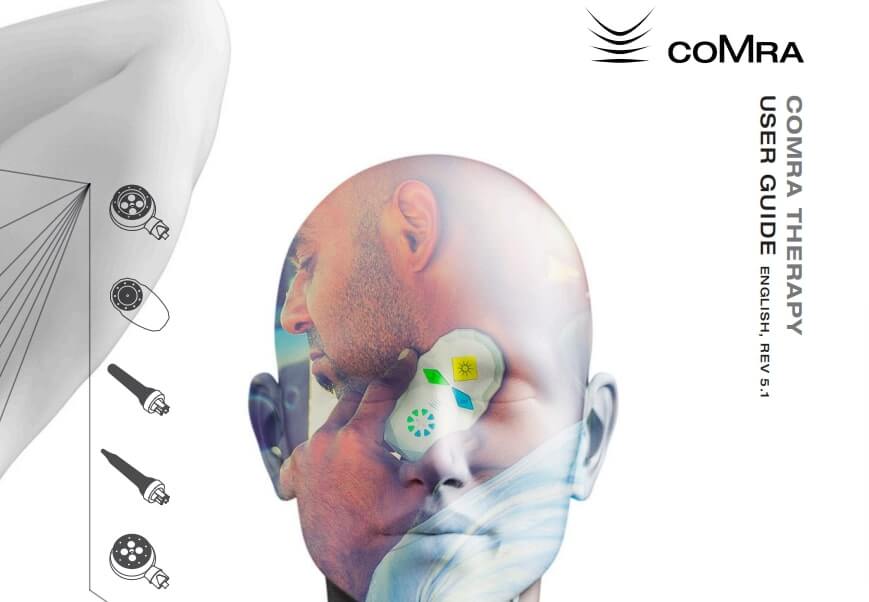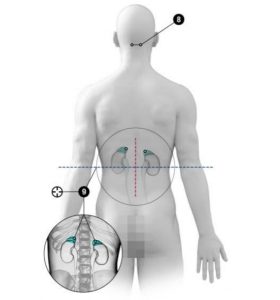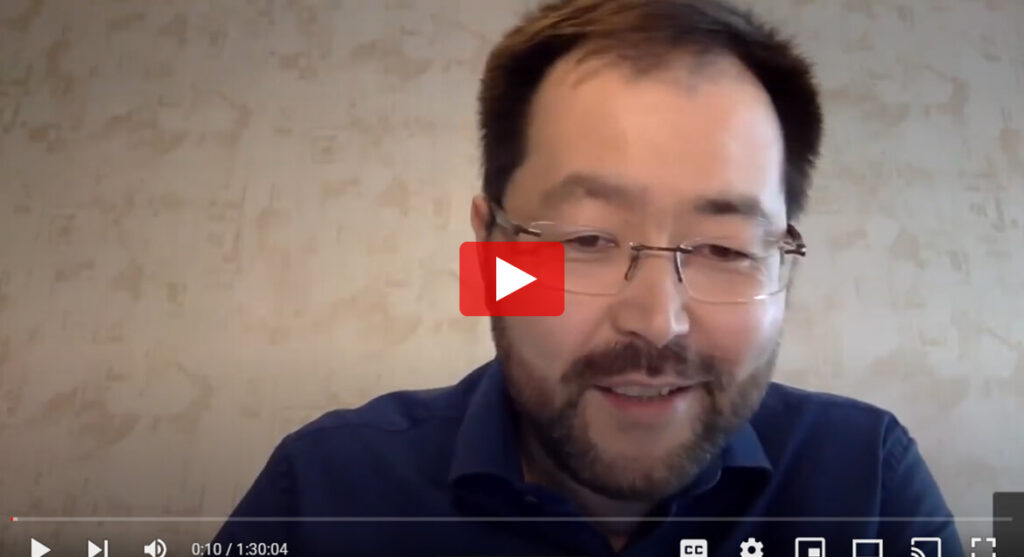We at the coMra team are proud to announce the launch of our latest User Guide. Find out what you can expect from this latest guide to coMra protocols.

WHAT’S NEW?
What changes can you expect from the new User Guide?
 GENERAL UPDATES
GENERAL UPDATES
- Our new graphics show certain areas of the body in more detail – for example, the adrenal glands.
- The body graphic diagrams are now displayed with genital areas masked, which is helpful for concerned parents wanting to share the User Guide with younger children.
- Based on experience, we have expanded the number of conditions that can be treated with certain protocols and added these conditions to the guide.
- The guide includes an update on 905 nm and 980 technology.
- We have removed ultrasound warnings on the brain.
NEW TRAUMATOLOGY TREATMENTS
Our Traumatology protocols have been expanded to help those affected by spinal problems.2,3
- TRAUMATOLOGY 1 is a protocol that assists with deforming degenerative spinal diseases, osteochondrosis, osteoporosis and scoliosis.
- TRAUMATOLOGY 17 is a protocol that assists with spinal disc herniation, spinal stenosis and spondylolisthesis.
NEW NEUROLOGY PROTOCOLS
NEUROLOGY 2 is a Radiculopathy protocol.
It helps to repair damage to nerve roots in the spine and also assists with Sciatica (pain, weakness and/or numbness caused by damage to the sciatic nerve).4
Research shows that LLLT has many useful applications for ophthalmology (eye care).5
NEUROLOGY 14 provides treatments for an expanded range of eye diseases, including:
- Optic neuropathy
- Glaucoma
- Macular degeneration
- Retinitis pigmentosa
- Retinal detachment
- Myopia (short-sightedness)
NEUROLOGY 15 helps with the management of diabetic polyneuropathy. Find out more about managing diabetes and neuropathy with coMra.
NEUROLOGY 16 provides post-herpetic support6 for neuralgia and shingles.
NEUROLOGY 17 assists with Complex Regional Pain Syndrome and post-traumatic neuralgia.
ENDOCRINE SYSTEM TREATMENTS
There is a very useful new treatment in the Endocrinology section.
ENDOCRINOLOGY 2 is a protocol for hormonal imbalance and premenstrual syndrome (PMS).
SEXUAL HEALTH ASSISTANCE
Our SEXUAL HEALTH 1 treatment course can help with several sexual and reproductive conditions, including:
- Erectile dysfunction (impotence)
- Low libido
- Premature ejaculation
- Some forms of male infertility
EXPANDED IMMUNOLOGY CONDITIONS
The guide includes a new section called Immunology (formerly Autoimmune). The updated section expands upon the range of conditions and treatments.
Expanded conditions that can be treated with the help of IMMUNOLOGY 1 are:
- Autoimmune conditions
- Rheumatic diseases
- Immunodeficiencies
- Lyme disease
- Systemic Lupus erythematosus
- Drug-induced Lupus erythematosus
IMMUNOLOGY 6, 7 & 8 can be used for the prevention, treatment of and recovery from acute respiratory infections including influenza (flu), the common cold and COVID-19.
PEDIATRIC CEREBRAL PALSY PROTOCOLS
There is increasing research into the treatment of cerebral palsy in children using LLLT.7 Our updated pediatrics section covers treatments for cerebral palsy across a variety of age groups.
PEDIATRICS 5 Cerebral Palsy protocols include treatment courses for:
- Infants younger than 1 year old
- Toddlers aged 1 to 3 years old
- Children aged 4 to 10 years old
- Children older than 10 years old
View our updated coMra User Guide online for more information.
Dr Arzhan Surazakov recently discussed the updated coMra User Guide in an informative webinar. You can view the full webinar online.
References:
1 coMra User Guide. English. REV 5.1.
2 Ay S, Dogan SK, Evcik D. Is low-level laser therapy effective in acute or chronic low back pain? Clin Rheumatol. 2010 Aug;29(8):905-10. doi: 10.1007/s10067-010-1460-03 Suellen de Oliveira Veronez Silva S, Assis L, Gallani Martin Del Campo PF, et al. Low-Level Laser Therapy and spinal cord injury: effects of 3 different fluences in the intermediate period of repair in an experimental model in rats. Braz. arch. biol. technol. 63. 2020.4 Barez MM, Tajziehchi M, Heidari MH, et al. Stimulation effect of low level laser therapy on sciatic nerve regeneration in rat. J Lasers Med Sci. Summer 2017;8(Suppl 1):S32-S37. doi: 10.15171/jlms.2017.s7
5 Rojas JC, Gonzalez-Lima F. Low-level light therapy of the eye and brain. Eye Brain. 2011; 3: 49–67. doi: 10.2147/EB.S213916 Mukhtar R, Fazal MU, Saleem M, et al. Role of low-level laser therapy in post-herpetic neuralgia: a pilot study. Lasers Med Sci. 2020 Oct;35(8):1759-1764. doi: 10.1007/s10103-020-02969-5.7 Rodrigues Santos MTB, Diniz MB, Gouw-Soares SC, et al. Evaluation of low-level laser therapy in the treatment of masticatory muscles spasticity in children with cerebral palsy. J. of Biomedical Optics, 21(2), 028001 (2016).


 GENERAL UPDATES
GENERAL UPDATES



